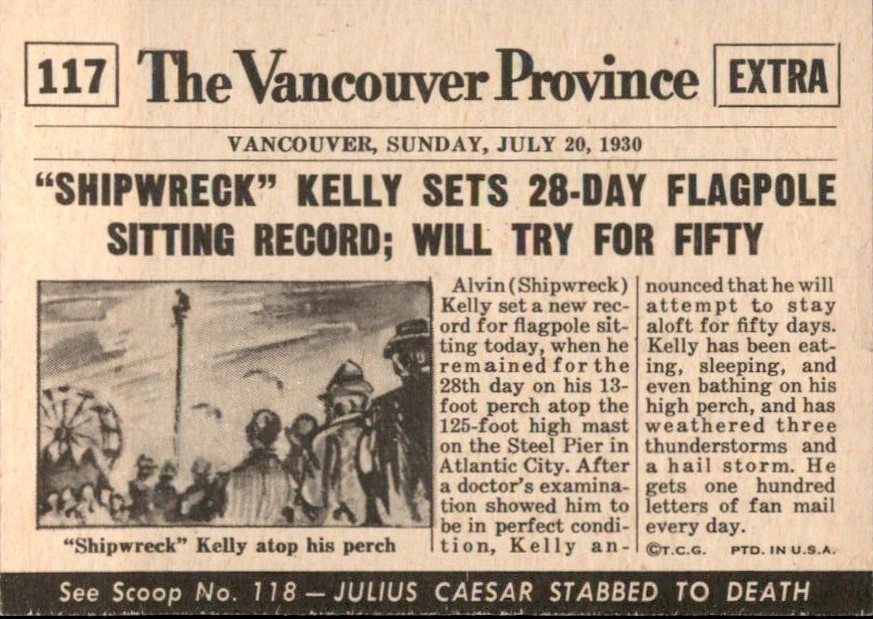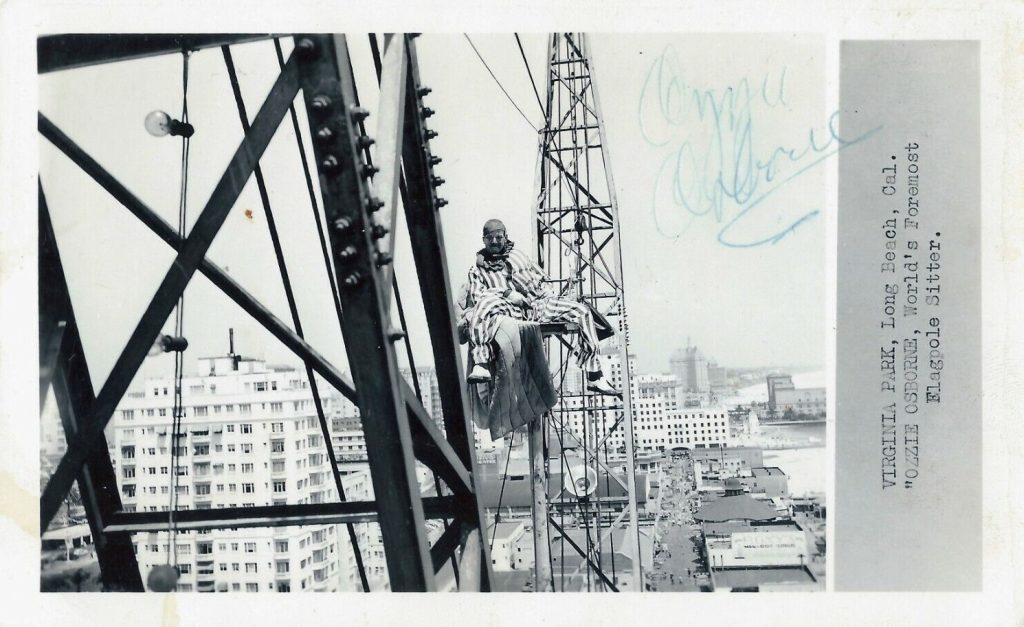George “Burt” Martin
Pole Sitting A Casual History
It is understandable why we frequently identify ourselves by what we do. Even in retirement, many of us think of ourselves in terms of the career we pursued. For example, in my line of work – a hotel executive – I met all sorts of people. Through a stretch of a few more than forty years and having the privilege of meeting thousands of people, I shook hands with a President, met two governors, and talked to lots of politicians, educators, physicians, several journalists (one a novelist with a best seller) several musicians, and a host of others, but I never met a pole sitter.
With absolute certainty, the same could be said of many of you.
A recent sports editorial appeared in our local newspaper (yes, there is one left in our corner of California) devoted to the outrageous salaries professional athletes are being paid by franchise owners. This prodded me into learning how much salary is paid to people who aren’t “playing games.”
(Let’s allow this to fester for a few minutes, while exploring another aspect of this story.)
My parents thought it was rude to ask someone how much money they made. Since the gloves have come off so many social taboos these days, I thought it would be easy to learn how much was paid to, say, a cancer researcher, a rocket scientist, or even a financial advisor. Well, I was wrong. Unless your salary (AKA: wage package) is a matter of public record, like that of a policeman, fireman, teacher, or other public servant, those searching for answers are limited to what the practitioner is willing to tell you.
Strangely enough one wage package I discovered in a San Diego Times=Advocate from 1928 was the $13.82 paid to a pole sitter for spending 24 hours and six minutes at the top of a purpose-built pole in a city park. The local Endurance Athlete Club sponsored the event to encourage new memberships. The event was described as having several observers.
Years before the concept of endurance became a television program staple with programs like, Survivor, the Amazing Race, American Idol, Big Brother, Dancing with the Stars, and Tough as Nails, Americans in the early decades of the twentieth century were amused and amazed with bizarre performance fads known as endurance contests.
Frankly, pole sitting was new to me. It may be that I had heard of it but it was never something I have seen before. In Europe the only country that seems to have embraced the idea is The Netherlands. There, it is called Paalzitten and one Dutch newspaper describes it as being, what it says – pole sitting. People sit on a pole. The person who stays on the longest wins. The poles are erected in water so the person falling off doesn’t get hurt. It is presumed that pole sitting originated in Friesland where the Frisians tried to stave off the boredom of long winters by inventing sports to do with poles. The sport became nearly extinct, presumably because sitting on top of a pole did not stave off boredom.
If you think pole sitting is strange, look up “bongelwuppen,” another sport that uses a pole that originated with the Dutch.

As for those who made a living as pole sitters, there are a few – very few! There are some famous ones, well, maybe, but there has never been a discussion of pole sitting that didn’t start with Alvin “Shipwreck” Kelly. Kelly was referred to in print as “the luckiest fool in the world.” He called himself an aerial stuntman and made the doubtful claim that he survived the sinking of the Titanic. Naturally there is no record of him ever being near the doomed vessel in 1912. In 1924, a friend dared Kelly to sit on a flagpole as a publicity stunt. He did and managed to stay in place for thirteen hours and thirteen minutes.

At the time, peculiar events drew a lot of notice. Kelly got the attention he wanted by traveling the country and charging admission for the spectacle, as well as earning endorsements from events like store and hotel openings and movie premieres. He once sat on a pole for twenty-two days at Madison Square Gardens during a dance marathon. He descended his seat after the last dancer dropped from exhaustion.
In regard to Kelly and those who followed him into the 1930s, it wouldn’t be long before far too many people, particularly politicians and public officials began to regard pole sitting as a public annoyance activity and its participants as vagrants and trespassers. Court cases were filed across the country based on public nuisance ordinances. Fines were levied and jail sentences served, but never did more than a few days pass that the public clammer remained calm.

The stories go on and in some cases the reasons are very personal. Some are noteworthy: Bob Baum set a record in 1946. A California resident named Ozzie Osborne grabbed the endurance record in 1948 at Virginia Park in Long Beach, California. In 1964 Dixon Blandy set a world record, spending 78 days atop a 155-foot pole at the Steel Pier on the Atlantic City Boardwalk, also in 1964 a lady from Alabama wanted to set the record, she lasted 217 days.

The latest pole sitting calamity happened in Clearwater, Florida, when in 1984, H. David Werder sat on a pole for 439 days to protest the price of gasoline. It is likely that the “gas price” reason was nothing but a ruse. Werder, a native of southwestern New York, truly wanted to be the world’s pole sitting champion. The Clearwater event was not his first attempt to get his name in the Guinness Book of World Records, it came on the heels of a previous 113-day “sit” in North Carolina.
* * *
I want to thank the staff at Postcard History for supplying the illustrations for this article. Along with those I never met was a postcard enthusiast who had a collection of pole sitter postcards.
Richard “Dixie” Blandy (referred to as Dixon Blandy in this article) died in 1974 after the pole on which he was perched collapsed.
What comes to mind is the song Flagpole Sitta. Seattle alternative band Harvey Danger had a following because of this 1998 single. Article provides substance which I was vaguely unaware.